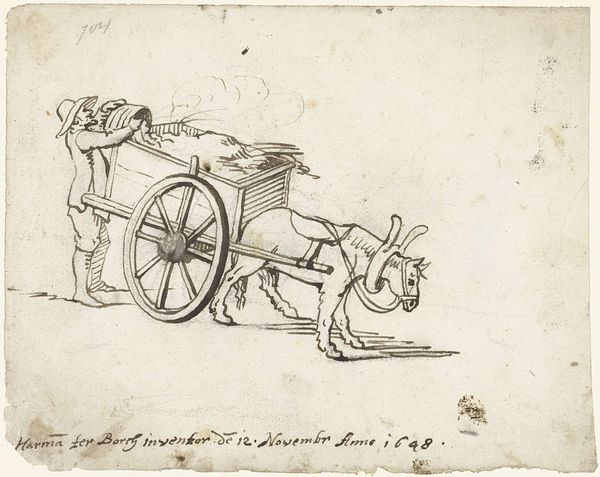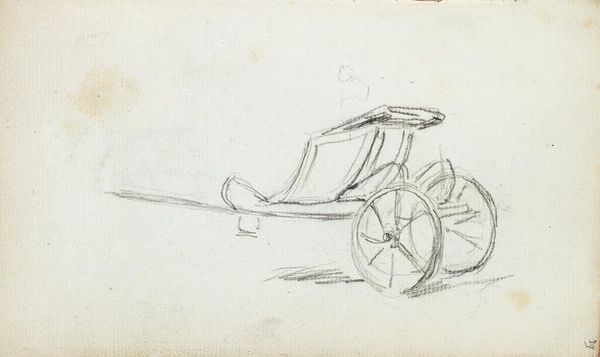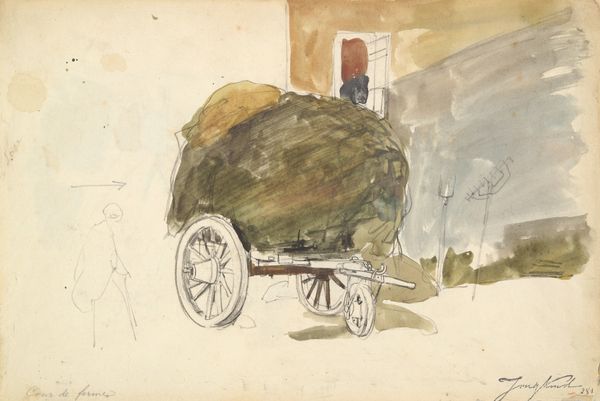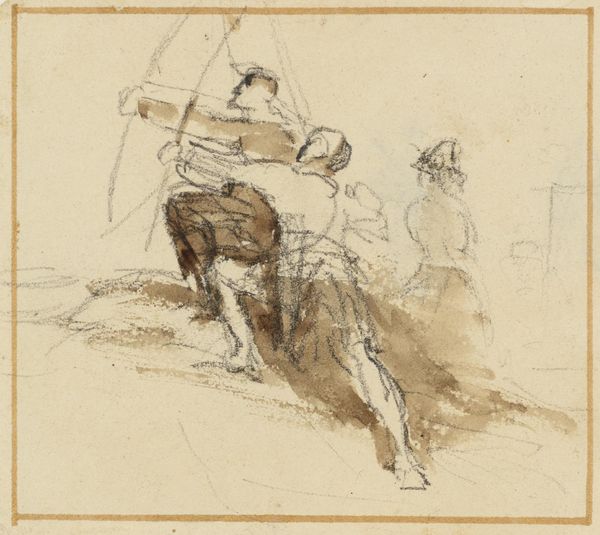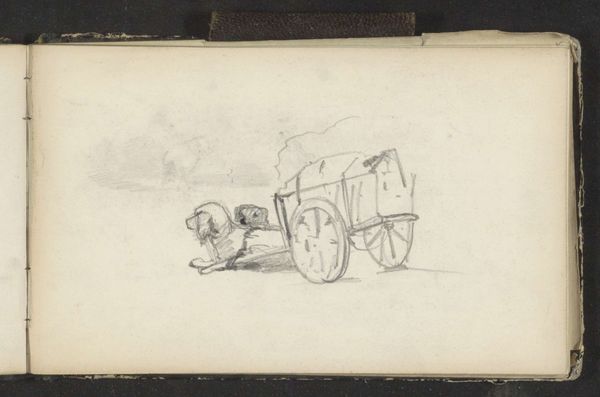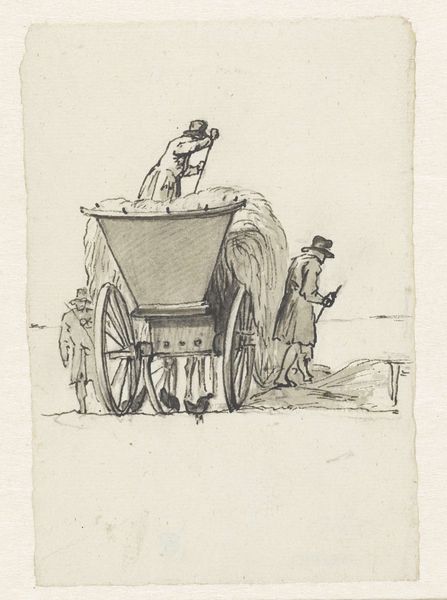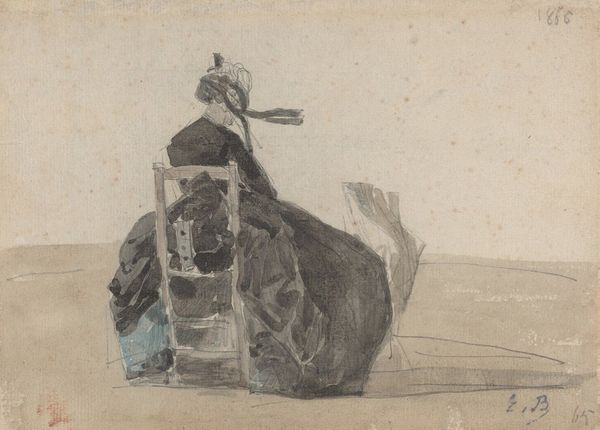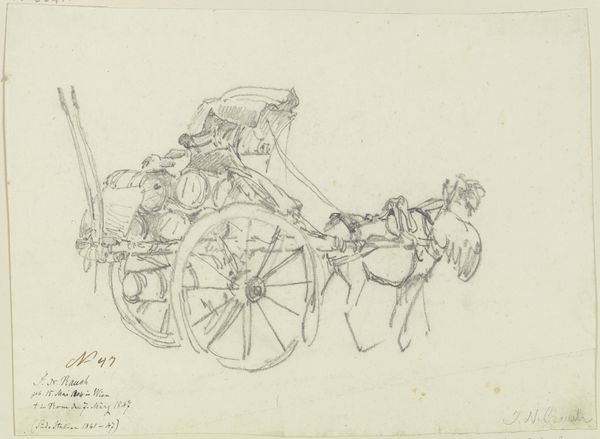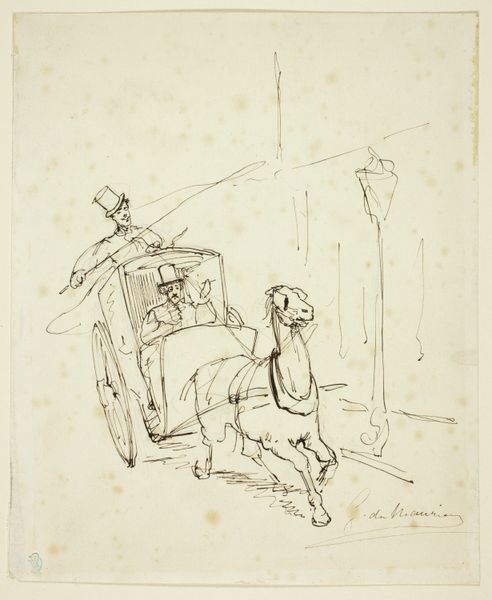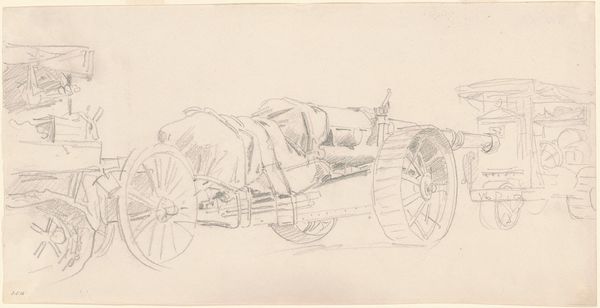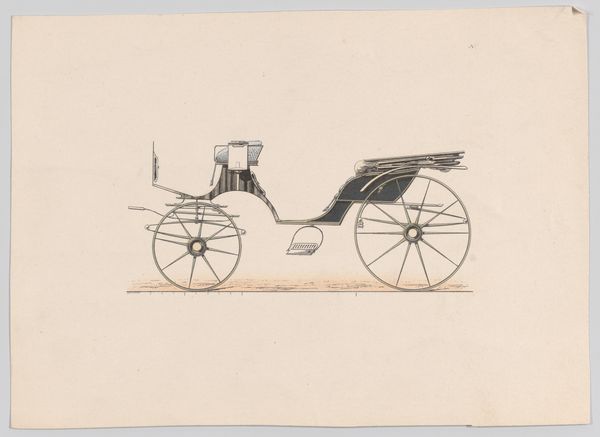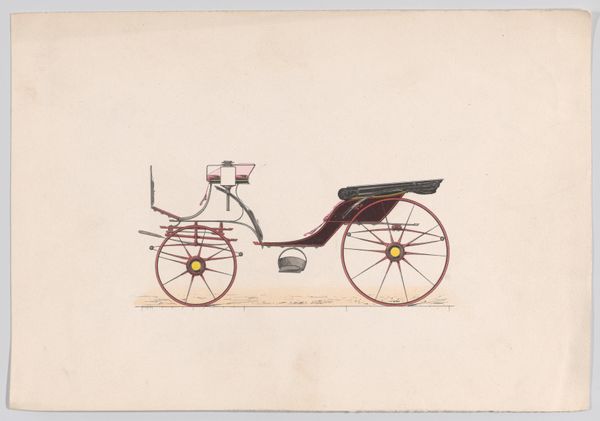
drawing, paper, watercolor, pencil
#
drawing
#
pencil sketch
#
landscape
#
paper
#
watercolor
#
pencil
#
watercolour illustration
#
genre-painting
#
watercolor
Dimensions: height 250 mm, width 232 mm
Copyright: Rijks Museum: Open Domain
Curator: This delightful piece is "Huifkar," a watercolor and pencil drawing on paper by Pieter Bartholomeusz. Barbiers, created sometime between 1782 and 1837. Editor: It's surprisingly delicate, isn't it? The light washes of color give it an airy, almost transient quality. A fleeting moment captured. Curator: Indeed. And that delicacy contrasts sharply with the actual reality of these covered wagons. It compels us to consider the process of producing this artwork in relation to its socio-economic impact. Who commissioned it? Was Barbiers interested in the mechanics, or perhaps the daily life tied to its purpose? Editor: Good questions. Contextually, these wagons represented not just transport, but social infrastructure. Their emergence facilitated trade, migration, and the circulation of information, essentially knitting communities together. Barbiers created it at a time of social upheaval in Europe and a shift towards modernization. It’s easy to forget that art then, like today, was never truly detached from contemporary politics and power. Curator: Precisely. What materials did Barbiers choose, and why? Pencil, watercolor on paper...accessible materials perhaps indicative of his social standing or the market he catered to? The swift execution of the medium suggests a keen observation honed from repetition. The material reality speaks to an emergent middle class, perhaps eager to capture fleeting glimpses of their world in accessible ways. Editor: Looking at it through the lens of institutional history, how would an image like this be presented? Perhaps used for nationalistic purposes celebrating trade and transportation as an achievement in the Netherlands? Genre painting like this became part of forging a national identity through picturesque scenes and accessible imagery. Curator: So we see how a simple drawing transcends mere depiction to embody broader societal and material conditions of its time. Editor: Exactly, it's a portal connecting us to both past artistic practices, socio-economic realities, and the way those converge to produce culture and shape public narratives. It all makes for such a rich and interesting context.
Comments
No comments
Be the first to comment and join the conversation on the ultimate creative platform.
